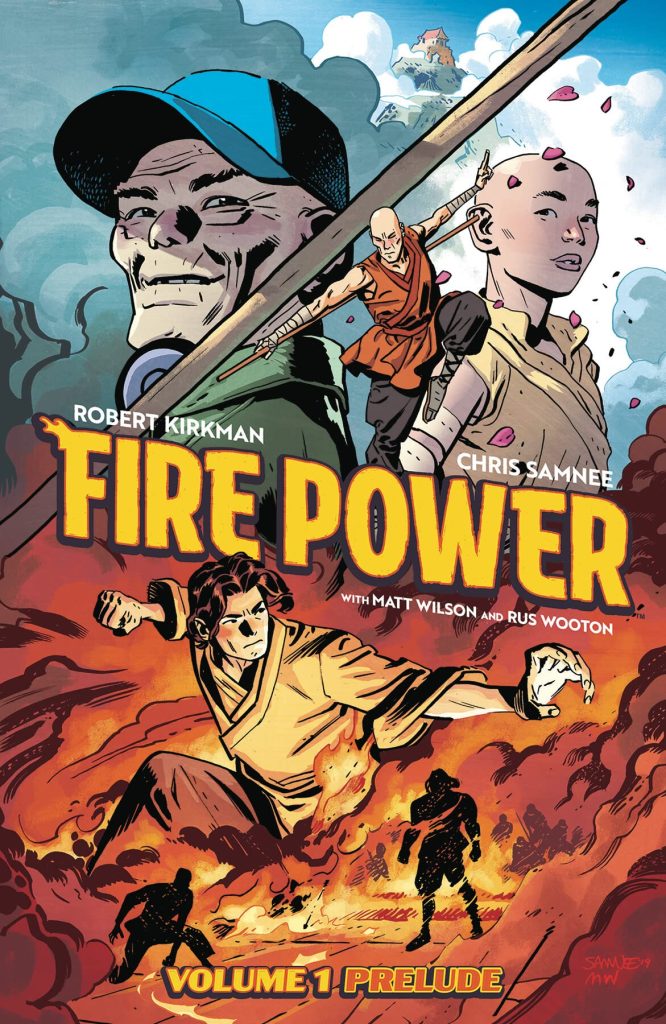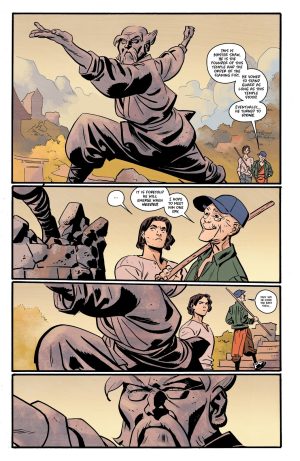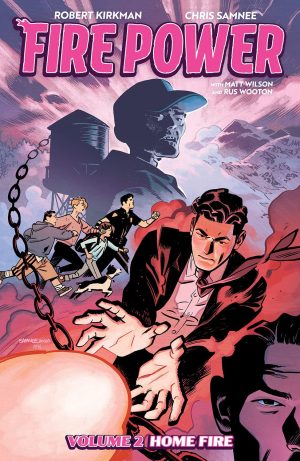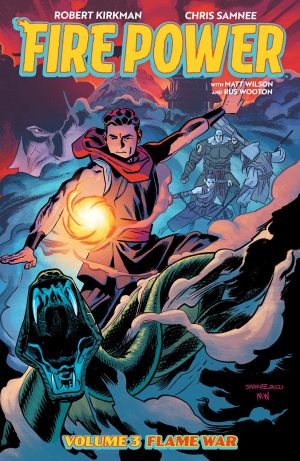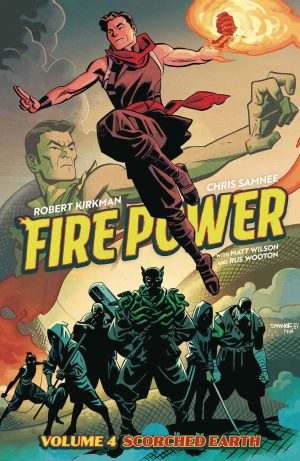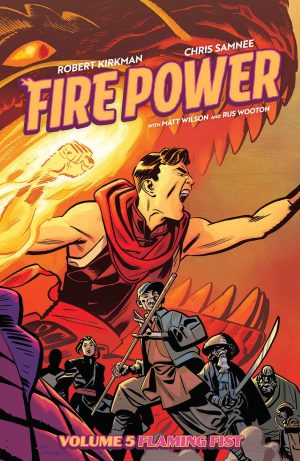Review by Ian Keogh
Robert Kirkman’s successful back catalogue bestows a high degree of confidence, yet even so, launching a new series with an original graphic novel is a brave move. So is then beginning that graphic novel with a dozen wordless pages, no matter how beautifully drawn by Chris Samnee.
Those pages follow Owen Johnson’s incredibly difficult journey through the Himalayas to a remote martial arts school. Owen’s trained under the best in the wider world, all of whom learned their skills here from Wei Lun, and he operates in the Himalayas. The school has a unique feature. In addition to combat, students are taught to take an energy that drifts with the air and use it as a form of fire power.
Kirkman’s reputation is founded on strong plots punctuated to a greater or lesser degree by action and drama, and with that skill sits on a pinnacle also occupied by Mark Millar and Mark Waid. However, launching with a graphic novel removes one of his trademarks, the killer chapter ending compelling readers to either want the next issue immediately if reading comics, or to turn the page or click on equally quickly in other formats. It’s a slight limitation for a plot already sticking very closely to expectations for martial arts dramas. There’s the resentful fellow student, the demanding master, the seeming heritage and the secrets kept behind guarded locked doors. Where Kirkman stakes his differences is in Wei Lun, sardonic and very knowing about the world beyond the Himalayas, and with some manifestly material interests. He’s the unknowable bridge between the familiar and the possibilities.
Of course, any possibilities are always more enthralling when illustrated by Samnee. It’s difficult to spot any weakness in his art. His page layouts are ideal, he never takes shortcuts, and he can switch between the action and quieter moments with equal feeling. Perhaps his people look too similar if all bald, but even then he has the consideration to supply different body types.
Prelude is just that, and too predictable and derivative in places. Kirkman obviously has a lot more in mind, as the series jumps forward fifteen years at the end, after which Fire Power develops from loving homage. However, here’s the thing, the misgivings are largely irrelevant. There’s no need to pick up Prelude to enjoy what was then serialised as monthly comics, so think of it as a bonus supplying 150 pages of Samnee’s great art.
Alternatively, this is combined with the next two volumes in hardback as Fire Power Book One. Home Fire is next.
